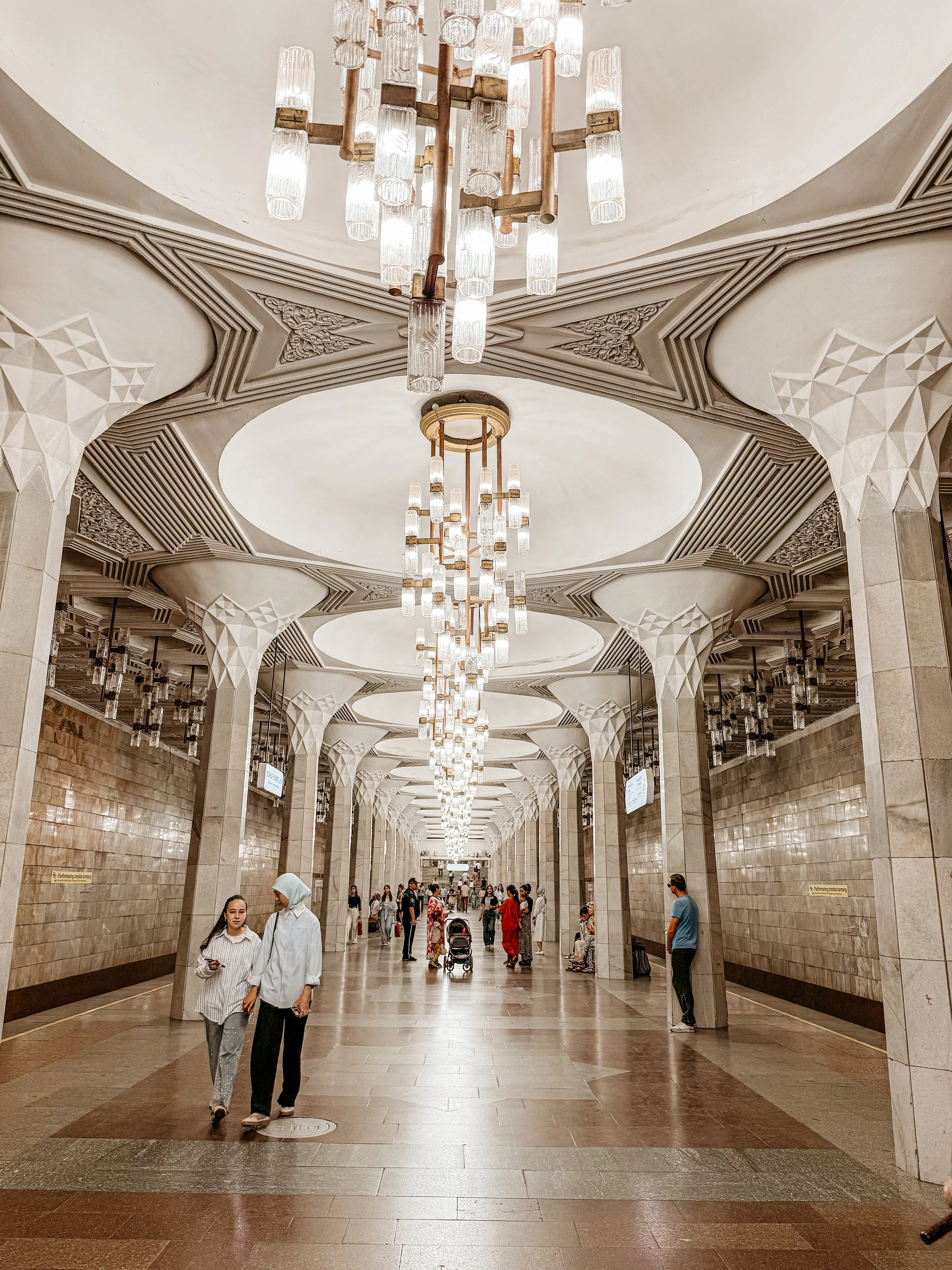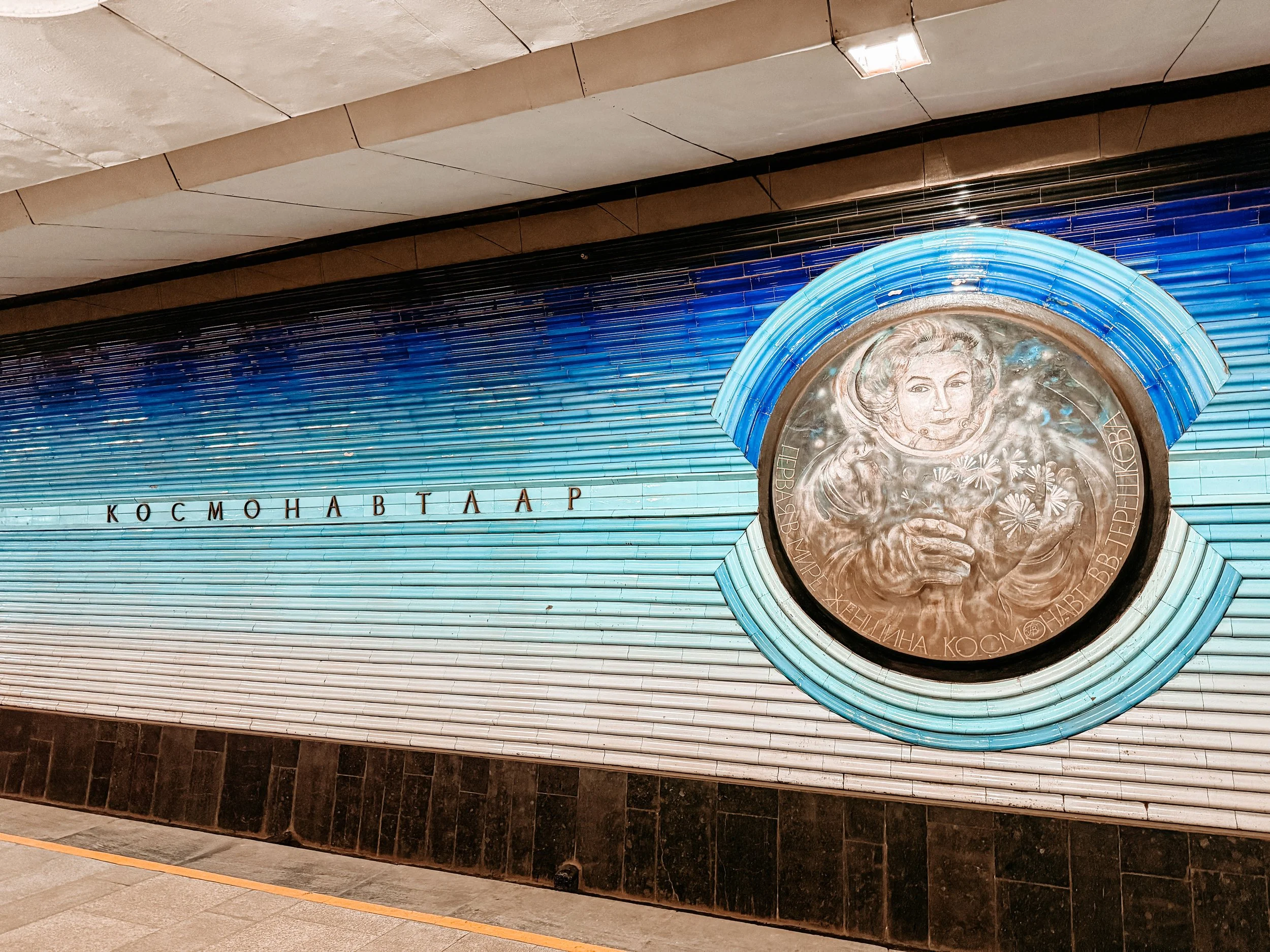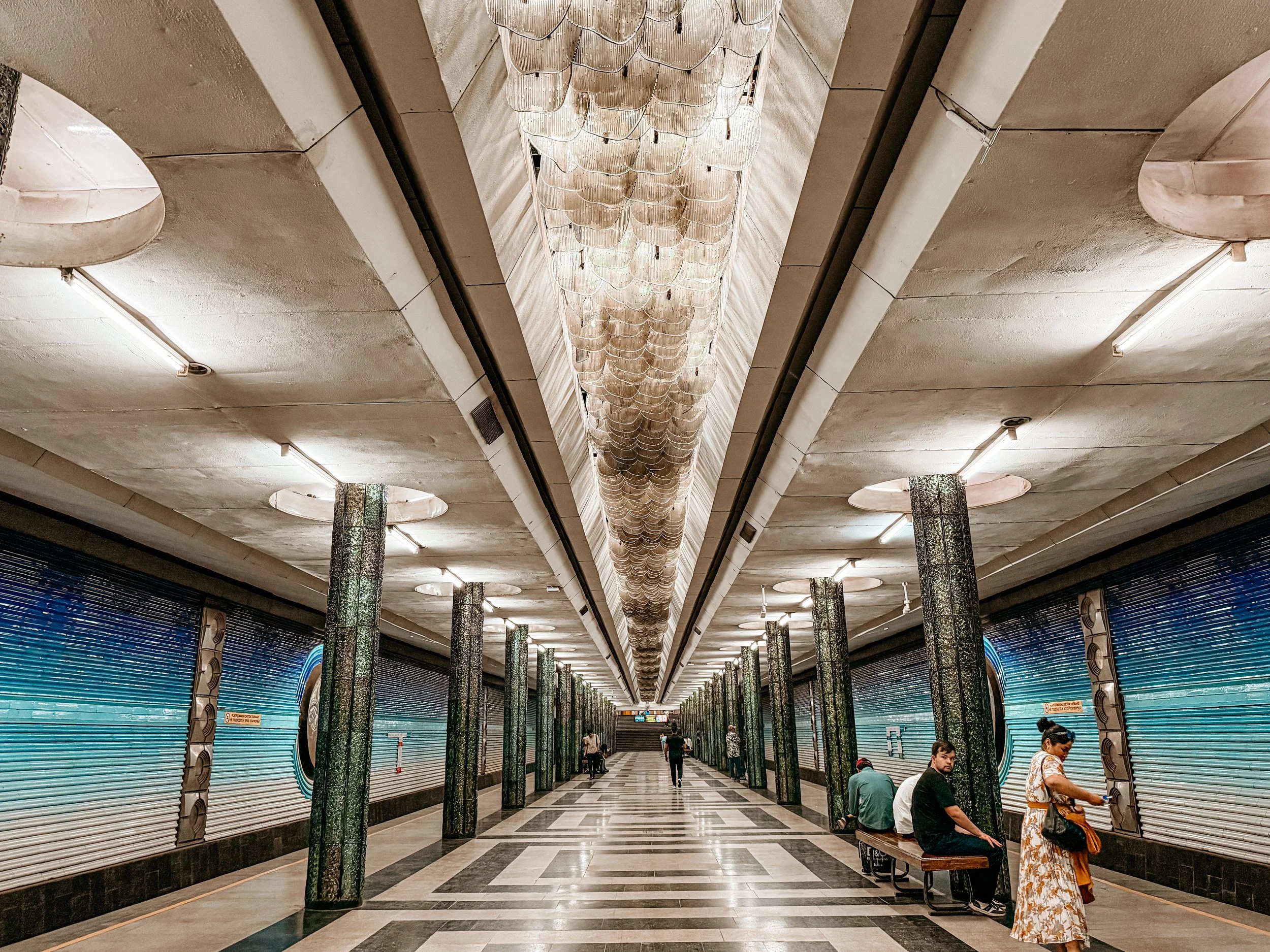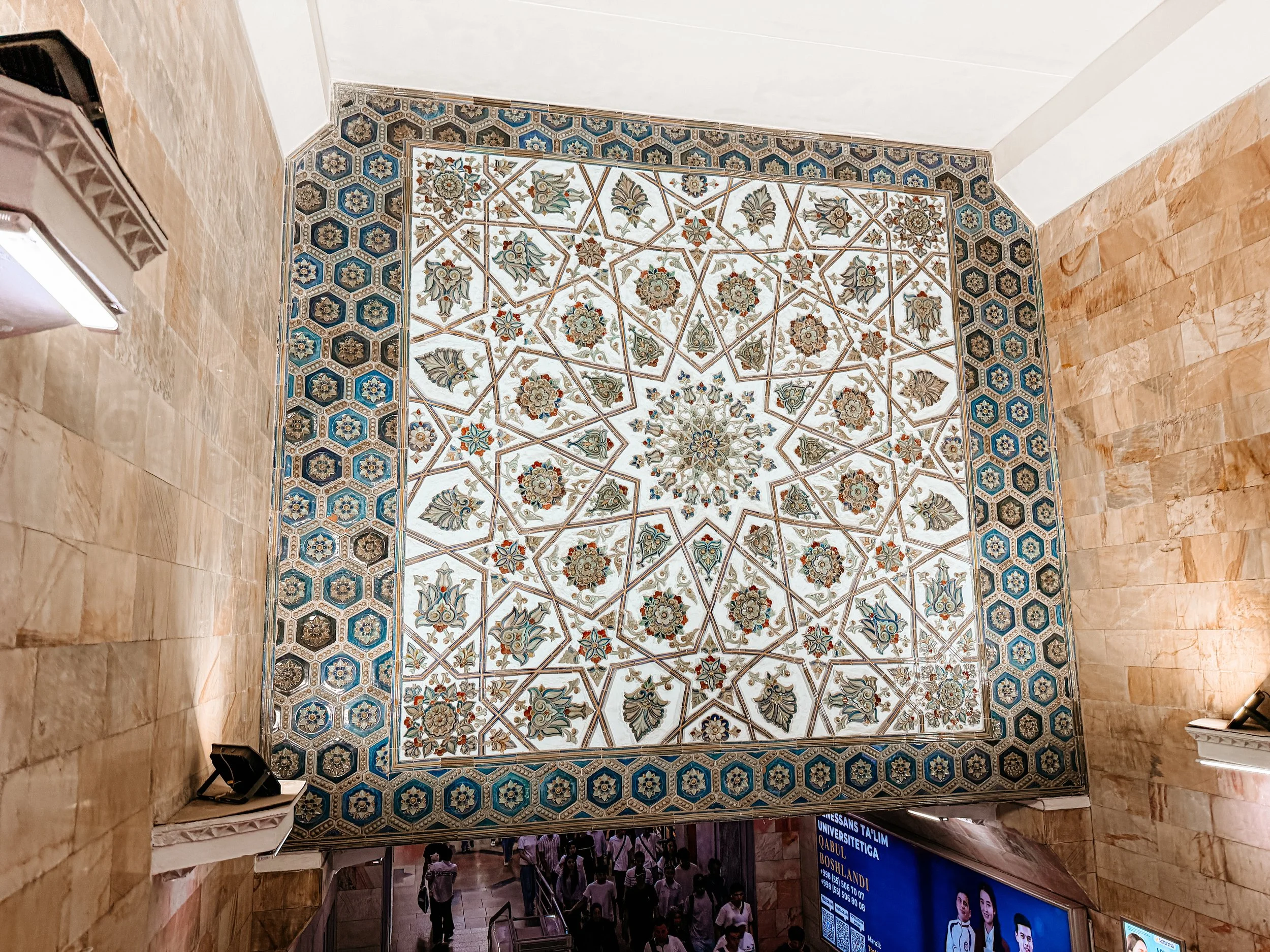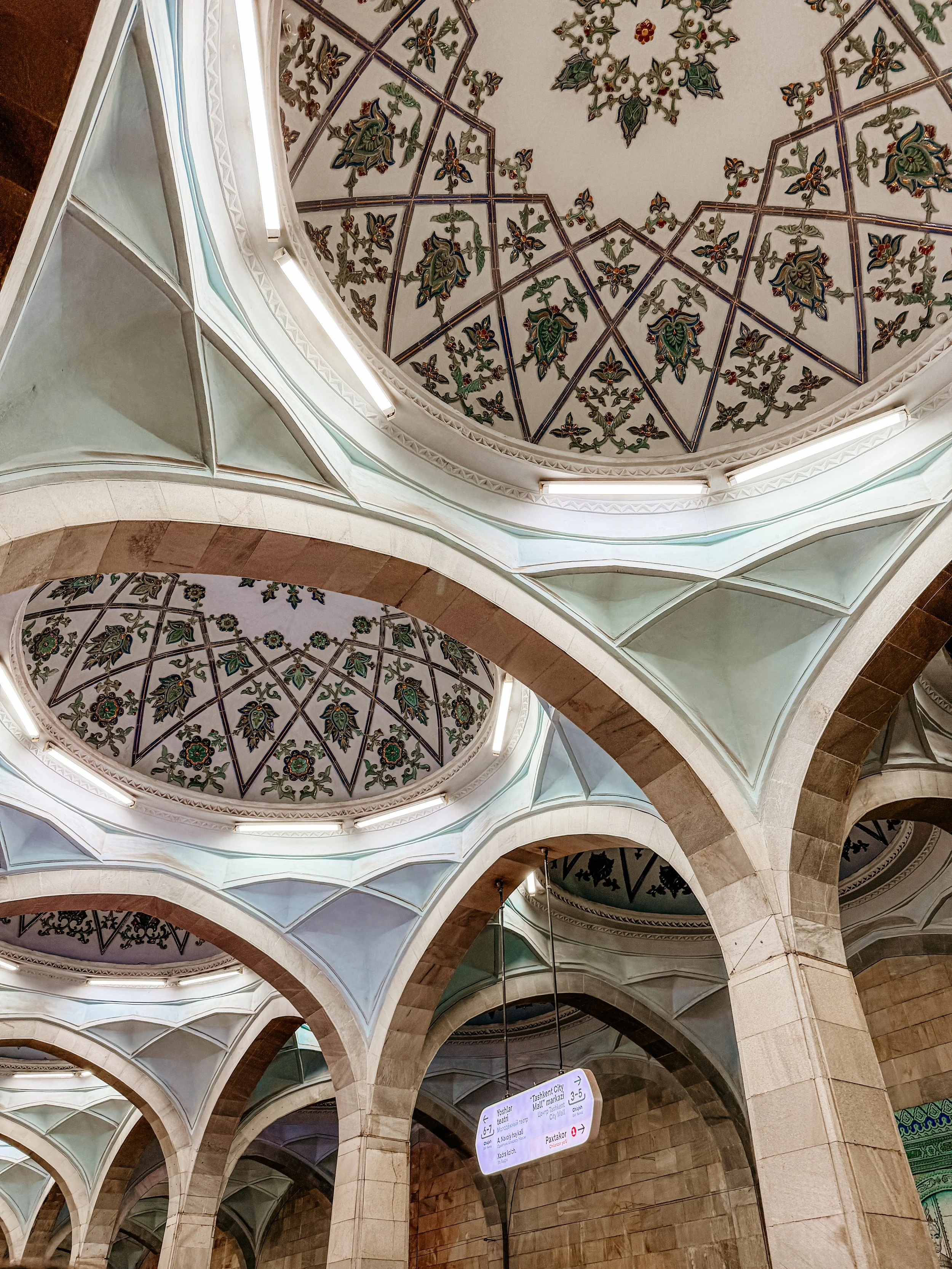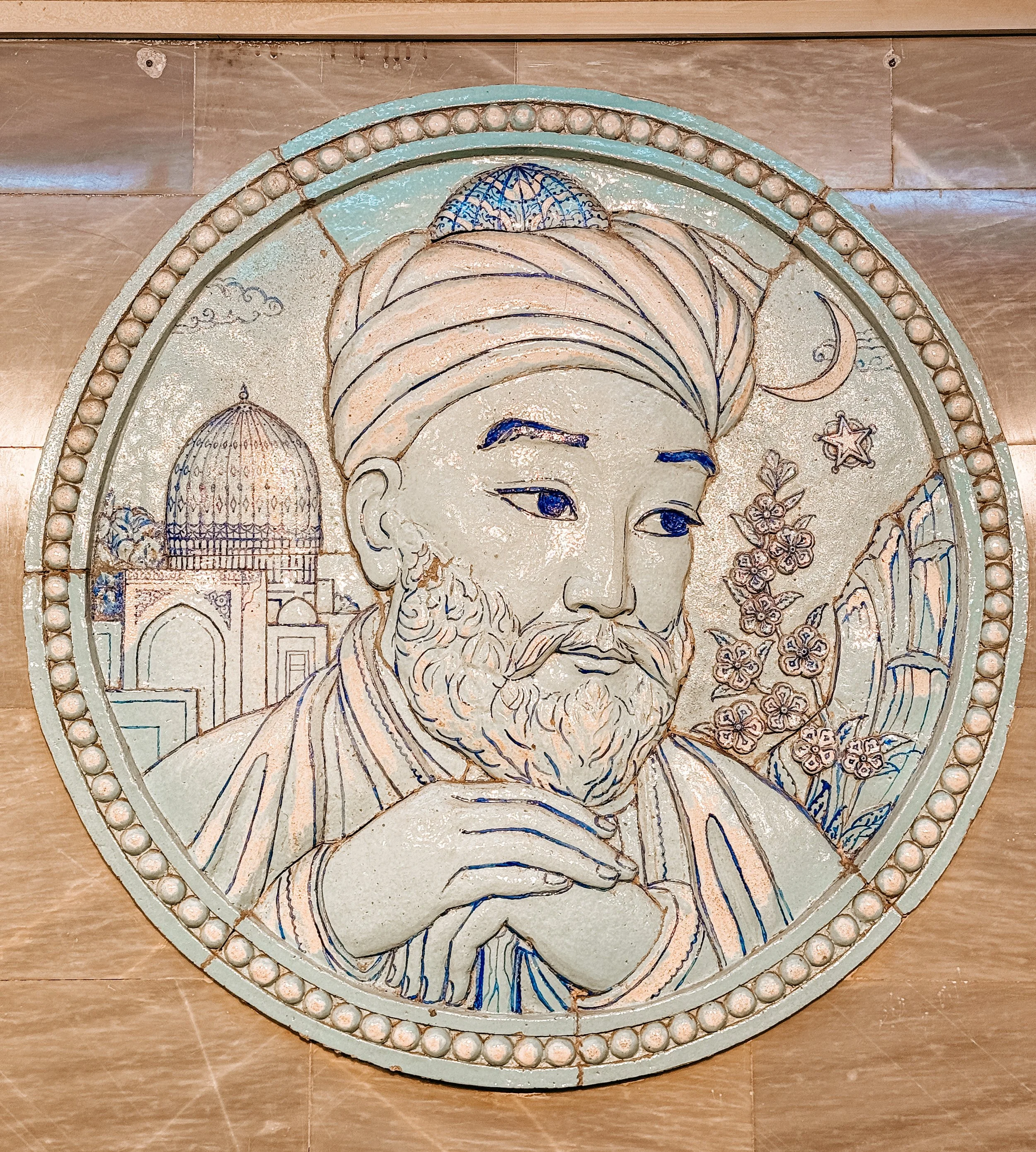A Journey on the Tashkent Metro
Cover: Mustaqilliq Station; Photos: Clarissa Tan
A ride on what is, perhaps, the world’s prettiest metro system is like being in an underground museum. The Tashkent Metro is more than a convenient way of traveling around the city; it’s a subterranean adventure through grand chandeliers, intricate mosacis, and Soviet-era history.
While you can still buy metro coins at the Kassa (counter), foreigners can easily tap a credit card at the turnstile — for just $0.15 per ride, no matter how far you travel! Plan your route on the Tashkent Metro app.
History
The Tashkent Metro was the first underground system in Central Asia, opened in 1977 as a gift from the Soviets to the Uzbekistan’s capital. After the 1966 Tashkent earthquake devastated the city, the Soviets were inspired to build the metro not just as a transportation system, but also a civil defense shelter. Each station was engineered to double as a bomb shelter in case of a potential Cold War conflict. Built by thousands of local Uzbek workers and Soviet engineers, the Tashkent Metro became a symbol of resilience — and today, it’s one of the most beautiful and affordable rides you’ll ever take.
Notable Stations
Each station feels like an interactive art exhibit, ranging from marble columns to stained glass and starry ceilings.
Cosmonauts: Perhaps the most famous one, this station serves as a tribute to the Soviet Union's achievements in space exploration. It was designed by architect Sergo Sutyagin, with dark blue walls and a ceiling adorned with glass stars. The platform is lined with ceramic paintings depicting prominent astronauts, including Yuri Gagarin, Valentina Tereshkova, and Uzbekistan's own Ulughbek.
Alisher Navoiy: Named after the 15th-century poet and philosopher, this station features high ceilings with ceramic murals depicting scenes from Navoiy’s poems.
Mustaqilliq Maydoni: Meaning "Independence Square," this station is centrally located and celebrates the nation's sovereignty. Its architecture reflects the grandeur of the Moscow Metro, with marble columns, high domes, and crystal chandeliers.
Pushkin: Named after the Russian poet, Alexander Pushkin, this station remains classy. With its dark golden interiors and refined golden lights, it creates a historical atmosphere that reflects Pushkin’s literary legacy.
Paxtakor: Meaning "cotton picker" in Uzbek. This station features vibrant green and blue mosaics with cotton plants, celebrating Uzbekistan's historical reliance on cotton for its economy.

